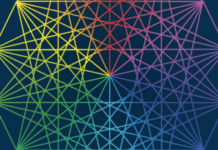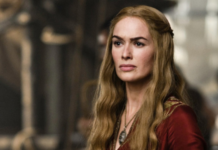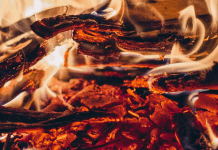Technically speaking there are basically three types of Druidry. The “Triad of Druidry” as I have come to call it, is essentially broken down into three very distinct categories.
The first group, of which most people are the most familiar, is the Neo group that includes the ADF, Henge of Keltria (if it’s still around), the RDNA and NRDNA (Reformed and New Reformed Druids of North America), and similar smaller groups. They are characterized by a heavy blending of Druidic and quasi-Druidic qualities with, well, everything else- the “eclectics” of Druidry if you will.
The second group I like to call the “Across the Pond-ers” because most of these traditions are either completely in the British Isles or have heavy roots over there. These include the OBOD, British Druidic Order, and so forth. What makes them unique is that they are neither trad nor eclectic, and base many of their rituals and codes by the surviving works of Roman authors (such as the infamous Pliny and Caesar). These groups tend to perpetuate the white robe gold sickle myth, and still venerate Stonehenge as a creation of Druids (which it isn’t).
The third category consists of the Trad groups. Trad (simply short for Traditionalist) Druidry differs from Wicca (and even many of the other Druidic groups) in a number of ways. Because my heritage is that of Welsh and Germanic, I keep to the ways and the pantheons of my ancestry. Trad Druidry has only three elements as opposed to four (or 5 depending on how you look at it), it follows Brehon Law instead of the Wiccan Rede, and we avoid the “white robes and gold sickles” stereotype because we realize how flawed that misconception is.
Unfortunately, websites that do Trad Druidry justice are incredibly rare, and I have a past time hobby of building one. There is one mass market book (amazingly from Llewellyn!) that does do a moderately fair job of discussing the elements of Trad Druidry called Druid Magic by Maya Magee Sutton. As is usual with most Llewellyn books, it has a hefty fluff element, but it at least bothers to mention things like the importance of the Tains, or myth cycles, that are so crucial to the religion, the origin of the Aurthurian myth, the oft forgotten symbology of the lance, cauldron, cup and dish. Probably it’s best feature is its discussion (though limited) of the Brehon Laws and the interpretations and tie-ins of the Tains.
Tain is actually a word used to describe a class of Celtic literature known by those who travel the literature circuit as the Ulster Cycle. It got this label from the most well known of this group of tales, the Tain Bo Cuailgne (The Cattle Raid of Cooley). There are many other epic stories under the category of Tain, all dealing with heroic deeds of various legendary figures. I have actually been stretching the use of Tain to cover all of the different types of Celtic literature, which I guess I shouldn’t do because it is inaccurate.
There are four types of literature in all, The Ulster Cycle, The Fenian Cycle (featuring Tóraigheacht Dhiarmada agus Ghráinne” or The Pursuit of Diarmaid and Grainne), The Historical Cycle (also called the Cycle of Kings, featuring Buile Shuibne or The Madness of Sweeney), and the Mythological Cycle (which tells the story of the Tuatha De Danaan). These terms are, of course, modern, created by present day scholars who study and translate items related to Celtic culture.
If you are interested in reading some of the Tains, allow me to recommend the following: The Tain Translated from the Irish Epic Tain Bo Cuailnge by Thomas Kinsella The Mabinogion (Penguin Classics) by Jeffrey Gantz, Celtic Lore by Ward Rutherford, A Celtic Miscellany by Kenneth Hurlstone, Classic Celtic Fairy Tales by John Matthews, The Epics of Celtic Ireland: Ancient Tales of Mystery and Magic by Jean Markale as well number of works by Miranda Green, John Matthews, and Caitlin Matthews. If you do decide to read the Tains, be forewarned that many of the names and places in these tales are incredibly hard to pronounce! You can’t even read the Mabinogion with out a pronunciation guide, and A Celtic Miscellany is about the same way.
It is always very hard to sum up an entire religion in a sound byte, but it is also important to highlight the markedly different approaches to the holidays. Samhain is our New Year, and is also the time for new agreements, contracts and marriages. Oaths made on Samhain Eve and are later broken is to invoke a curse upon yourself. Like Wicca, it is also a time of commemoration of the dead and communication with spirits. Souls of the deceased are gathered up on this night, and this is why (for us) the Veil between worlds is pulled thin. It is also the point in the year when the Sun dies to be reborn at the Winter Solstice.
The Winter Solstice is a light festival welcoming back the sun and the coming of longer, warmer days. Hearthfires, bonfires, candles and torch parades mark this turning point holiday. It is one of the two days in the year that is considered a primarily masculine holiday.
Oemelg (or Imbolc) is the first big feast holiday, where we celebrate the renewal of life. It is based on calfing and it was used as a mark of the year’s bounty to come. We celebrate by decorating the house (or gathering place) with buds, early flowers and leafing branches, and a feast including items like rabbit, lamb, and suckling pig, and also going around through the fields (or woods) making lots of racket to wake up the earth.
The Spring Equinox is the beginning of the planting and growing season, and it is also (like all of the holidays after Samhain) a festival of sympathetic magic. We feast and light fires to symbolically lend strength to the sun which is beginning to finally turn back the tides of darkness and cold. There is also dancing (or parading) through field and forest to energize the crops.
After that comes Beltane, and even though Trads know we did not use a maypole I have adopted it anyway. Aside from the marriage thing, Beltane is the most similar holiday. Fertility, sexual energy, the whole Spring Fever bit.
The Summer Solstice is the other big male energy day for us, for it is the zenith of the Sun’s power and begins to gradually fade at that point. We do something remotely similar to a Drawing Down of the Sun, and we honor the men in our lives.
The Autumn equinox is the first harvest festival and the day we call Lughnasadh. This that demonstrate physical and mental prowess. We also display our knowledge of the three Sacred Arts of Music, Dance and Poetry or Satire in addition to our skill level in whatever grades we have completed, which for me would be history and herbalism because of my adcent through the Bardic and Ovate grades. It is the day that we prove ourselves worthy to continue as Druids, which all boils down to being a civil servant. Public duty is the cornerstone of Trad Druidry.
Sadly, there is no one site that compares one “brand,” if you will, of Druidry to another. The best thing to do is to compare the homesites of the Big Three of Druidry: http://www.adf.org/core/, The ADF http://www.druidry.org, OBOD – The Order of Bards, Ovates and Druids http://www.uoguelph.ca/~bmyers/druid.html (The closest thing to a representative Trad Druidry page).
I hope I was able to shed a little light on the obscure tradition that is Trad Druidry, as well as fairly demonstrate the diversity among Druidry as a whole. If you are interested in knowing more or would like a suggested reading list, I’ll be glad to oblige. Let me know what you think.








